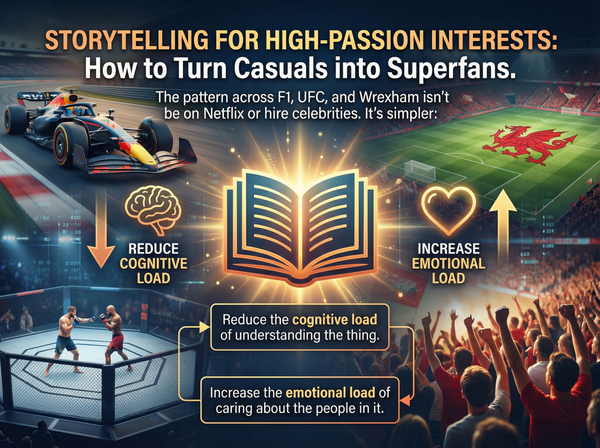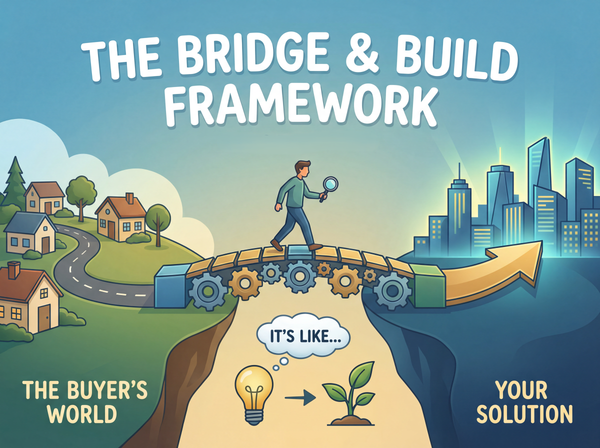How to Make Ads That Get the Right People to Click
Why Most Ads Fail (and How to Fix It)
Creating winning ads often feels like guesswork. But what if you could turn ad creation into a predictable, repeatable process?
Instead of producing a handful of ads each month, the most effective marketers scale by generating hundreds of high-converting ads.
The secret is an Ad Assembly Line approach, where you build ads from interchangeable components - hooks, content, and calls-to-action (CTAs).
This method isn’t just about volume. It’s about systematically finding ads that perform, scaling past the saturation wall, and reaching new audiences.
The Ad Assembly Line Framework
The power of this framework comes from breaking ads into three distinct parts:
1. Hooks (x50) – Stop the Scroll
- The first few seconds of an ad determine whether people keep watching.
- Spend 80% of your prep time here. If the hook doesn’t grab attention, nothing else matters.
2. Meat (x3–5) – Deliver the Value
- The body of the ad fulfills the promise of the hook.
- Dedicate 20% of prep time to create rotating content formats (explained below).
3. CTAs (x1–3) – Drive Action
- A strong CTA tells your audience exactly what to do next.
- Keep it clear, not clever - show them the button, the link, or the next step.
By mixing and matching these components, you can create 150–750 ads per week (50 hooks × 3–5 meats × 1–3 CTAs).
Crafting High-Converting Hooks
Hooks are the most important part of your ad. To create dozens of winning hooks quickly:
- Repurpose past winners: Take hooks from your top-performing ads.
- Use organic content: Turn your best-performing tweets, emails, or posts into ad hooks.
- Borrow inspiration: Save and analyze other ads in your niche.
- Test expansion hooks: Adapt hooks to different audience awareness levels.
Audience Awareness Framework
Beyond reusing and adapting existing hooks, you can create expansion hooks to reach new, broader audiences. This involves tailoring your hook to different levels of customer awareness.
- Most Aware: Offer-driven hooks (discounts, deals).
- Product-Aware: Proof-driven hooks (results, testimonials).
- Solution-Aware: Promise-driven hooks (specific outcomes).
- Problem-Aware: Pain-driven hooks (highlight the challenge).
- Completely Unaware: Curiosity-driven hooks (reveal hidden problems).
Pro Tip: Don’t be afraid to use memes - relatable content expands reach and engagement.
5 Ad Formats That Convert (The Meat)
Once your hook grabs attention, the meat keeps them engaged. Rotate these five proven formats:
- Demonstration Ads – Show the product in action (before/after, tutorials).
- Testimonial Ads – Highlight customer stories, interviews, or user-generated content.
- Education Ads – Share value-driven tips, explainer videos, or listicles.
- Story Ads – Use personal or brand storytelling to build connection.
- Faceless Ads – Text overlays, screenshots, or animations (great for scale).
Mixing these formats ensures your ads don’t burn out quickly.
The Importance of Clear CTAs
A CTA is the final nudge. To maximize conversions:
- Be direct and specific (e.g., Download Your Free Guide).
- Use both text and visuals to show the next step.
- Remove friction by demonstrating exactly what happens after they click.
Scaling Your Ads With This Process
By consistently producing a large volume of ads using this assembly line system, you dramatically increase your chances of finding scalable winners.
Instead of guessing which ad might work, you’re running structured experiments with hundreds of variations. This increases both conversion rates and ad ROI.
The formula is simple: More ads → More winners → More growth.
FAQs About High-Converting Ads
Q: What makes a hook effective in ads?
A: An effective hook instantly grabs attention by addressing a pain point, promise, or curiosity trigger. It should stop the scroll within the first 3 seconds.
Q: How many ads should I test each week?
A: With this framework, aim for at least 150 ads per week. The higher the volume, the faster you’ll identify winners.
Q: What’s the most common ad mistake?
A: Overcomplicating CTAs. The most effective CTAs are short, clear, and action-focused.
Q: Do meme ads really work?
A: Yes - when used strategically. Meme-style hooks expand reach and are especially effective for problem-aware or completely unaware audiences.
Final Takeaway
If you want to scale your business, you need a system for creating better and more ads at scale.
The Ad Assembly Line framework—built on strong hooks, versatile ad formats, and clear CTAs—helps you generate a steady stream of high-converting ads that can be tested, scaled, and optimized for maximum ROI.
Keep Crushing!
- Sales Guy


